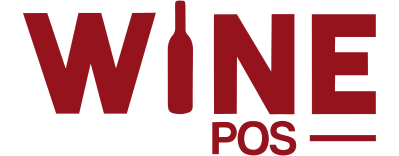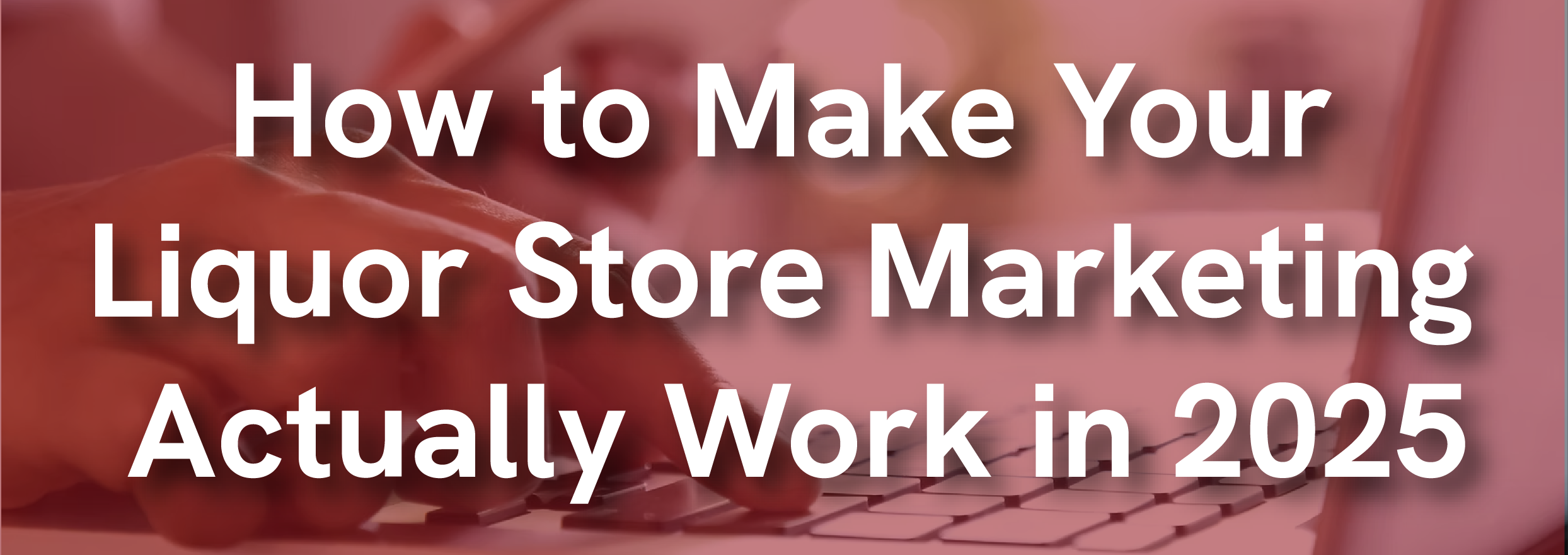Liquor store marketing is changing faster than ever. Retail media will capture nearly 25% of all US media ad spending by 2028. Traditional marketing approaches are no longer enough in this new reality.
Most small businesses put 5-10% of their revenue into marketing. Liquor stores that run effective marketing campaigns can expect returns between $3 and $5 for every dollar spent. These numbers show the most important growth opportunities that proper marketing strategies can deliver.
This complete guide explains proven marketing strategies for liquor stores in 2025. Readers will find practical steps to boost their store’s visibility and sales through digital presence optimization and customer retention programs. Each section gives practical insights supported by current market data and industry expertise.
Building Your 2025 Liquor Store Marketing Foundation
Liquor store marketing success depends on understanding today’s beverage alcohol world. The global alcoholic beverage industry shows remarkable momentum in several categories. Ready-to-drink (RTD) cocktails recorded a 2% volume growth and 6% value increase in 2023.
Analyzing Current Market Trends
U.S. beer, wine, and liquor store revenue grows steadily at 2.2% CAGR and will reach $79.90 billion by the end of 2024. Premium spirits show strong market potential with global market size reaching $215.47 billion in 2023. Consumer priorities continue to evolve – 44% of beverage alcohol shoppers want speed and streamlined processes at retail.
Setting Measurable Marketing Goals
Marketing goals should line up with specific performance indicators. WinePOS analytics help track vital metrics like new product placements, account visit frequency, and sales volume. These data points give clear explanations for quick strategy adjustments and resource allocation.
Three key areas to set goals:
- Sales growth standards and timeline targets
- Customer acquisition and retention metrics
- Distribution coverage and product placement goals
Creating Your Marketing Budget Framework
Small liquor stores usually put 5-10% of revenue into marketing activities. This investment spreads among channels based on their results. The budget framework accounts for seasonal changes and promotional cycles.
The commercial scorecard approach measures performance through sales, market share, and brand metrics. This method balances marketing investments between traditional advertising, digital presence, and in-store promotions. Distribution percentages across on-premise and off-premise accounts reveal network gaps and growth opportunities.
Local market dynamics shape budget allocation significantly. To name just one example, 86% of younger consumers (<45) are willing to pay more for eco-friendly options. These insights help direct marketing funds toward initiatives that strike a chord with target demographics.
Implementing Data-Driven Marketing Strategies
Evidence-based decisions create successful liquor store marketing campaigns. Customer behavior patterns and product selection improvements stem from consumer insights.
Using WinePOS Analytics for Customer Insights
WinePOS software gives liquor stores detailed customer tracking capabilities. Store owners can scan driver’s licenses to build customer profiles and track purchase histories. This data creates targeted email campaigns based on buying patterns. The system makes shared loyalty programs possible where shoppers collect points and get rewards.
Tracking Campaign Performance Metrics
Key Performance Indicators (KPIs) measure marketing success through specific metrics:
- Sales growth rate and average transaction value
- Customer retention percentage
- Inventory turnover statistics
- Conversion rates (20-40% considered healthy for retailers)
Consumer insights identify alcohol category usage, product needs, and emerging flavor trends. These metrics help develop a complete view of customer behavior, including brand awareness and advertising effectiveness.
Optimizing Marketing ROI
Return on Investment calculation uses a simple formula: ROI (%) = [(Revenue Generated – Marketing Spend) / Marketing Spend] x 100. Small liquor stores typically see returns of $3 to $5 for every marketing dollar spent.
Data insights show consumer information needs and the best channels to reach them. This knowledge shapes pricing strategies by revealing what customers will pay for different alcoholic beverages.
Customer data analysis goes beyond simple demographics. It has gender, age groups, race, household income, and geographic location details. This detailed segmentation creates precise targeting of marketing efforts.
Regular data review matters greatly. Store owners should analyze sales performance, review pricing strategies, and check marketing campaign results. This ongoing analysis helps businesses remain competitive and adapt to market changes.
Mastering Digital Marketing Channels
Modern liquor stores need digital channels to succeed in marketing. Customers respond well to social media platforms, email campaigns, and local search optimization.
Social Media Marketing Tactics
Social media platforms let you connect with customers directly. Facebook works best for older shoppers, while Instagram and TikTok attract younger audiences. Your brand awareness and sales will grow with quality visuals and compelling stories.
A well-planned content strategy leads to social media success. Your posts should showcase lifestyle experiences, product quality, and community participation. Customer trust grows when you interact with followers through comments and messages.
Key social media tactics for liquor stores:
- Share cocktail recipes and serving suggestions
- Host virtual tasting events and live streams
- Create user-generated content campaigns
- Post behind-the-scenes glimpses of store operations
Email Marketing Automation
Retail sectors see remarkable returns from email marketing, $45 for every dollar spent. Customer actions trigger automated sequences that create timely, relevant messages.
WinePOS integration helps you run targeted email campaigns based on purchase history and customer priorities. Welcome messages, abandoned cart reminders, and restock notifications trigger automatically.
Your emails succeed more with personalization. Relevant offers come from grouping subscribers by their priorities, purchase history, and engagement levels. Automated sequences deliver the right message at the right time instead of generic broadcasts.
Local SEO Optimization
Local search optimization connects nearby customers to your store. Your local visibility grows stronger with accurate business information across online platforms. Google My Business listings affect local search rankings significantly.
Directory listings strengthen your local presence. Better search performance comes from consistent name, address, and phone details across Yelp, Yellow Pages, and chamber of commerce websites. Local business partnerships create valuable backlinks that boost authority.
Mobile optimization matters more than ever. Customers who search “liquor store near me” want quick access to location, hours, and contact details. Strong local rankings continue with regular business information updates and active review management.
Creating High-Converting Promotions
Liquor stores can boost their sales through well-timed promotional campaigns and targeted offers. The right promotion strategy combines seasonal opportunities with customer priorities to boost revenue.
Seasonal Campaign Planning
Consumer buying patterns change dramatically with the seasons. Summer months see higher sales of light beers and refreshing cocktails. Cold weather brings a surge in rich spirits. Sales peak during holiday seasons when celebrations fuel higher purchase volumes.
Smart store owners begin their summer promotion planning during winter. WinePOS analytics track seasonal buying patterns and inventory needs. These insights help stores stock up properly for upcoming promotional periods.
Customer Segment Targeting
Market research reveals eight distinct customer segments in the alcoholic beverage industry:
- Cautious Traditionalists: Drink occasionally, primarily during holidays
- Sophisticated Connoisseurs: Extensive interest in new products and trends
- Bon Vivants: Focus on enjoyment, eager to learn
- Social Experience Seekers: Young, curious customers
- Healthy Security Seekers: Predominantly women aged 20-39
- Folksy Bargain Hunters: Traditional buyers seeking deals
Different customer groups show unique priorities in alcohol selection. This knowledge helps create targeted promotions. Stores can customize their marketing messages and product offerings to match specific segment interests.
Limited-Time Offer Strategies
Limited-time offers create urgency and boost immediate sales. These promotions work through three key mechanisms:
Exclusive deals generate excitement around specific products. Time-sensitive offers prompt quick buying decisions, even from hesitant customers.
Bundle deals make buying decisions easier while increasing average order value. Product displays near wine and spirits encourage extra purchases.
Seasonal specialties and limited-edition products grab attention. Stores must be careful with promotion frequency since too many offers can lose their appeal.
WinePOS software tracks promotion performance and customer responses. The system shows which offers strike a chord with different customer segments. These analytical insights help stores fine-tune their promotional strategies based on real purchase behaviors.
Successful promotions feature holiday-themed bundles, exclusive loyalty program offers, and strategic discount timing. Store owners should spread these offers across in-store displays, email campaigns, and social media platforms.
Leveraging Technology for Growth
Technology plays a vital role in successful liquor store marketing campaigns. Smart liquor store POS software solutions streamline operations and boost sales.
Marketing Automation Tools
Modern POS systems take care of repetitive marketing tasks automatically. WinePOS software sends automatic emails based on how customers shop. New customers receive welcome messages right away. The system alerts shoppers when their favorite items are back in stock. It also sends promotional messages that match specific buying habits.
Stock tracking happens up-to-the-minute with automated inventory systems. Products get reordered automatically when they run low. The system provides detailed analysis of sales patterns and how quickly items sell, which helps store owners make better marketing choices.
Customer Relationship Management
CRM systems are the foundations of customer interaction. Modern liquor store software tracks important customer details:
- What they buy and like
- How they use loyalty programs
- How well they respond to promotions
- Which customer groups they belong to
Advanced CRM tools study how customers shop. Store owners can spot their best customers and create marketing campaigns just for them. The software keeps track of every way customers interact with the store, whether they visit in person or shop online.
Up-to-the-minute information helps create customized marketing. Store owners can see shopping patterns and change their approach. This helps them guess future sales and keep the right amount of stock.
Inventory-Marketing Integration
Marketing works hand in hand with smart inventory management. Modern systems track how fast products sell and how profitable they are. This shows stores which items need more promotional attention.
Smart analysis guides marketing choices. The software looks at:
- Past sales numbers
- Changes with seasons
- How local events affect sales
- Market direction
Integrated POS systems help with marketing across all channels. They keep inventory numbers accurate between physical stores and online shops. This stops stores from advertising items that are sold out and keeps prices consistent everywhere.
Mobile apps make marketing work better. About 60% of shoppers prefer stores that have mobile apps. Customers can check what’s in stock, look at prices, and buy items without coming to the store.
Automatic inventory tracking helps plan promotions better. Store owners get alerts about items that aren’t selling well. They can create special offers before products sit too long on shelves.
AI systems help predict what customers will buy. They look at customer information to understand what people like and what’s trending. This shapes marketing strategies that connect with target customers.
Inventory and marketing work together in a continuous cycle. Sales numbers help decide future marketing plans. Marketing results affect inventory decisions. Together, they help the business grow smarter.
Conclusion
Modern liquor stores need a smart mix of digital breakthroughs and customer-first approaches to succeed in 2025. Stores that use integrated POS systems like WinePOS achieve better results through targeted promotions and automated marketing campaigns.
Small liquor stores can expect solid returns – $3-$5 for every marketing dollar invested. Smart budget allocation between digital channels, seasonal promotions, and customer relationship management propels growth. On top of that, stores that make use of information analytics to learn about customers consistently perform better than their competitors.
Success depends on three key elements. Stores must adopt digital marketing channels while keeping a strong local presence. Evidence-based decisions should guide all marketing efforts. Modern POS systems help automate routine tasks and make marketing more effective.
Small steps create big changes. Simple improvements in social media presence, email marketing, or local SEO build momentum for bigger projects. Store owners should focus on strategies that match their customer base and business goals instead of trying everything at once.



